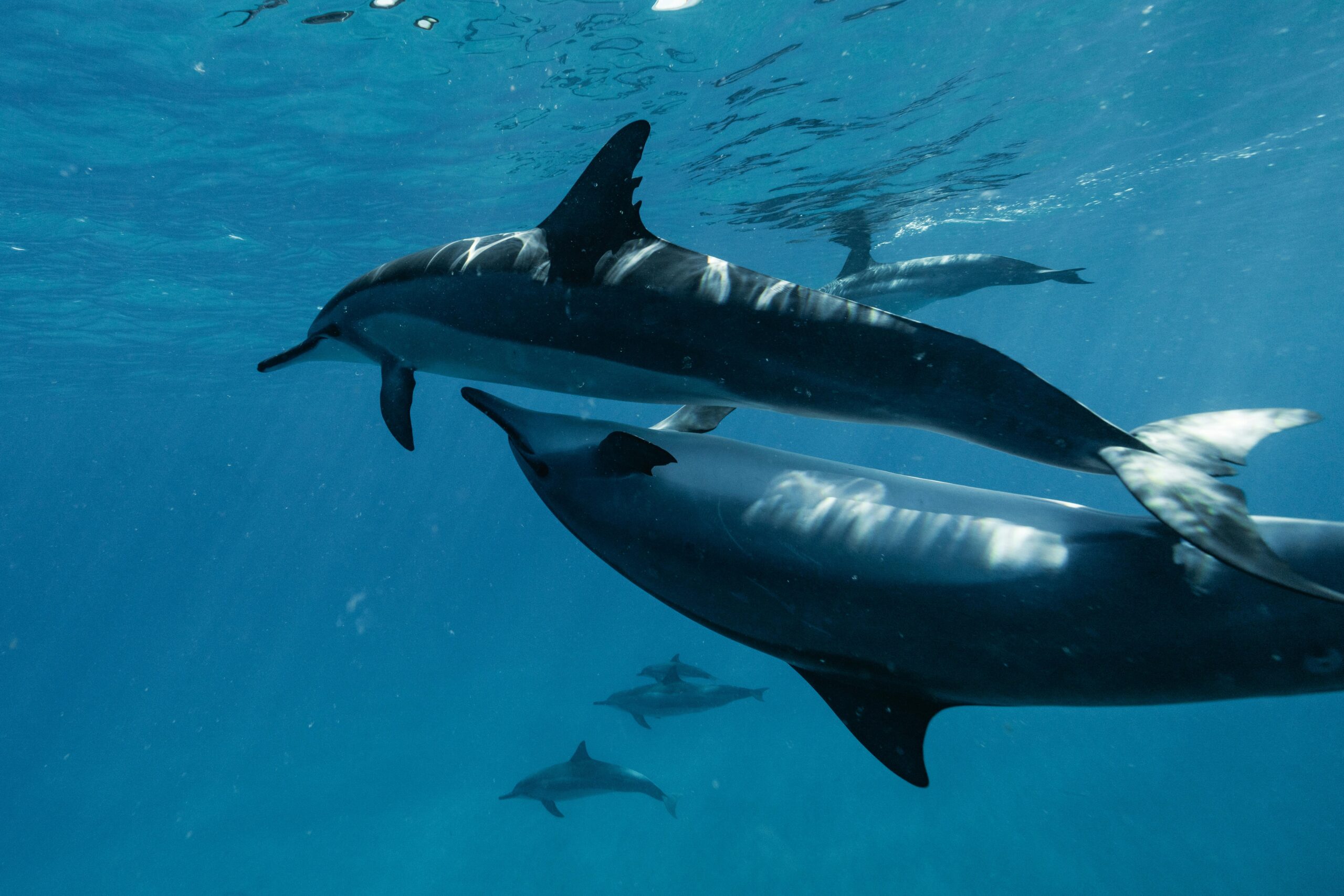Biodiversity represents the magnificent tapestry of life woven across our planet, a divine masterpiece that speaks to the infinite creativity of nature’s design. 🌍
From the tiniest microorganisms dwelling in ocean depths to the majestic elephants roaming African savannas, every living creature plays an irreplaceable note in Earth’s grand symphony. This intricate web of life forms, ecosystems, and genetic variations creates a harmonious balance that sustains all existence on our beautiful blue planet.
Understanding biodiversity goes beyond merely cataloging species. It encompasses the delicate relationships between organisms, the ecosystems they inhabit, and the genetic diversity within populations. This divine expression of life has evolved over billions of years, creating a masterpiece of adaptation, resilience, and interconnectedness that continues to inspire wonder and reverence.
The Sacred Orchestra of Species Diversity 🎵
Species diversity forms the most visible layer of biodiversity’s heavenly composition. Scientists estimate that Earth hosts between 8 to 100 million species, though only approximately 1.7 million have been formally identified and cataloged. This uncertainty itself testifies to the overwhelming abundance of life’s creative expression.
Each species represents a unique verse in nature’s sacred text, carrying genetic information refined through millennia of natural selection. From the microscopic tardigrades that survive extreme conditions to the ancient bristlecone pines standing sentinel for thousands of years, every organism contributes its distinctive voice to the planetary chorus.
The tropical rainforests serve as nature’s grandest cathedrals, housing more than half of Earth’s terrestrial species within environments that cover less than 10% of the planet’s surface. These biodiversity hotspots pulse with life energy, where a single tree might host hundreds of insect species, and a square kilometer contains more plant varieties than entire countries in temperate zones.
The Hidden Realms of Microbial Majesty
Beneath our feet and throughout the biosphere, microbial life performs essential symphonic movements that make all other life possible. Bacteria, archaea, fungi, and protists comprise the vast majority of Earth’s biomass and genetic diversity. These microscopic maestros orchestrate nutrient cycling, decomposition, and countless biochemical processes fundamental to planetary health.
A single teaspoon of healthy soil contains more microorganisms than humans on Earth. This teeming microscopic universe breaks down organic matter, fixes atmospheric nitrogen, and creates the fertile foundation upon which terrestrial ecosystems flourish. Without these invisible conductors, nature’s symphony would fall silent.
Genetic Diversity: The Divine Code Within 🧬
Within each species lies another dimension of biodiversity’s brilliance—genetic diversity. This variation in genetic material between individuals and populations provides the raw material for adaptation and evolution. It represents nature’s strategy for resilience, ensuring that species can respond to environmental changes and challenges.
Genetic diversity functions like a vast library of solutions, where different genetic combinations equip organisms with varying abilities to resist diseases, tolerate environmental stresses, and thrive under different conditions. When we lose genetic diversity, we effectively burn pages from this sacred book of survival strategies.
Agricultural systems heavily rely on genetic diversity for food security. Ancient crop varieties and wild relatives of domesticated plants contain genetic treasures that modern breeding programs access to develop disease-resistant, climate-adapted, and nutritionally enhanced food sources. This genetic heritage represents thousands of years of natural and human-guided selection.
Ecosystem Diversity: Nature’s Sacred Temples 🏔️
Ecosystem diversity encompasses the variety of habitats, biological communities, and ecological processes occurring across the planet. From coral reefs to deserts, from tundra to wetlands, each ecosystem type represents a distinct expression of life’s adaptive genius.
These varied environments create different stages upon which the drama of life unfolds. Coral reefs, though covering less than 1% of the ocean floor, support approximately 25% of marine species. Wetlands purify water, control floods, and serve as nurseries for countless species. Forests regulate climate, produce oxygen, and provide habitat for terrestrial biodiversity.
- Marine ecosystems: Oceans, coral reefs, mangroves, and deep-sea vents
- Freshwater systems: Rivers, lakes, wetlands, and underground aquifers
- Terrestrial biomes: Forests, grasslands, deserts, and tundra
- Transitional zones: Estuaries, riparian areas, and ecotones where ecosystems merge
The Divine Web: Interconnectedness and Interdependence 🕸️
Perhaps biodiversity’s most profound characteristic is the intricate interconnectedness of all living things. No species exists in isolation; each organism participates in complex networks of relationships that bind the living world together in sacred unity.
Pollinators provide a powerful example of this interdependence. Bees, butterflies, birds, and bats facilitate reproduction for approximately 75% of flowering plants and 35% of global food crops. Without these flying messengers, ecosystems would collapse, and human food systems would fail catastrophically.
Predator-prey relationships regulate population dynamics and maintain ecosystem balance. Keystone species exert disproportionate influence on their environments—wolves in Yellowstone, sea otters in kelp forests, and elephants in African savannas shape entire ecosystems through their presence and behaviors.
Symbiotic Partnerships: Nature’s Sacred Alliances
Symbiotic relationships reveal biodiversity’s collaborative essence. Mycorrhizal fungi form partnerships with plant roots, extending their reach and nutrient absorption capacity. Nitrogen-fixing bacteria inhabit root nodules of legumes, converting atmospheric nitrogen into forms plants can use. These partnerships demonstrate that cooperation, not just competition, drives evolution.
The human body itself hosts trillions of microorganisms in the gut microbiome, skin, and other tissues. This internal ecosystem influences digestion, immunity, mental health, and overall wellbeing. We are not merely individuals but walking ecosystems, living proof of biodiversity’s intimate connection to all life.
Ecosystem Services: Earth’s Divine Provisions ✨
Biodiversity provides countless services that sustain human civilization and all life on Earth. These ecosystem services represent nature’s continuous gift to existence, functioning as the planet’s life-support system.
Provisioning services supply direct resources: food, fresh water, timber, fiber, and medicinal compounds. Over 50,000 plant species have medicinal applications, and approximately 70% of cancer drugs are natural products or inspired by nature. The genetic diversity within wild species offers untapped pharmaceutical potential worth billions of dollars.
Regulating services maintain environmental conditions necessary for life. Forests and oceans absorb carbon dioxide, mitigating climate change. Wetlands filter pollutants and regulate water flow. Insects decompose waste and cycle nutrients. These services operate continuously, mostly unnoticed, sustaining the conditions that make Earth habitable.
| Service Category | Examples | Human Benefits |
|---|---|---|
| Provisioning | Food, water, medicines, raw materials | Direct resources for survival and economy |
| Regulating | Climate regulation, water purification, pollination | Environmental stability and health |
| Supporting | Nutrient cycling, soil formation, photosynthesis | Foundation for all other services |
| Cultural | Recreation, spiritual enrichment, aesthetic beauty | Quality of life and wellbeing |
The Silent Crisis: When the Music Fades 😢
Despite its majesty, biodiversity faces unprecedented threats. Scientists describe our current era as the sixth mass extinction, with species disappearing at rates 100 to 1,000 times higher than natural background extinction rates. This crisis threatens not only individual species but the entire symphony of life.
Habitat destruction remains the primary driver of biodiversity loss. Deforestation, urbanization, and agricultural expansion fragment and eliminate natural ecosystems. Since 1900, the world has lost approximately 64% of wetlands, while tropical forests continue disappearing at alarming rates despite their irreplaceable ecological value.
Climate change amplifies other threats, shifting temperature and precipitation patterns faster than many species can adapt. Coral reefs experience mass bleaching events as ocean temperatures rise. Arctic ecosystems transform as permafrost melts and sea ice retreats. Species distributions shift poleward and upward in elevation, disrupting established ecological relationships.
Additional Pressures on Earth’s Living Tapestry
Pollution contaminates air, water, and soil, poisoning ecosystems and accumulating in food chains. Plastic waste permeates every environment from mountain peaks to ocean trenches. Chemical pollutants disrupt reproductive systems, weaken immune responses, and directly kill countless organisms.
Overexploitation depletes populations faster than they can recover. Overfishing has collapsed multiple marine fisheries. Illegal wildlife trade pushes iconic species toward extinction. Unsustainable harvesting of plants depletes medicinal and food resources. These practices steal from future generations while impoverishing present ecosystems.
Invasive species disrupt native communities, outcompeting indigenous organisms and altering ecosystem functions. These biological invasions, often facilitated by global trade and travel, homogenize ecosystems and reduce regional biodiversity. Island ecosystems prove particularly vulnerable, having evolved in isolation without defenses against continental predators and competitors.
Guardians of the Sacred: Conservation and Restoration Efforts 🌱
Despite daunting challenges, dedicated efforts worldwide work to protect and restore biodiversity. Protected areas now cover approximately 15% of terrestrial and 7% of marine environments, providing refuges where nature’s symphony can continue relatively undisturbed.
Community-based conservation recognizes that local people, particularly indigenous communities, serve as effective biodiversity stewards. Traditional ecological knowledge accumulated over generations offers valuable insights for sustainable resource management. When local communities benefit from conservation, they become powerful allies in protecting natural heritage.
Restoration ecology applies scientific understanding to heal damaged ecosystems. Reforestation projects plant billions of trees annually. Wetland restoration revives degraded marshes and swamps. Coral reef restoration transplants resilient coral fragments to rebuild damaged reefs. These efforts demonstrate that with commitment and knowledge, we can help nature recover.
Technology Serving Conservation 📱
Modern technology amplifies conservation efforts. Satellite imagery monitors deforestation and habitat changes in real-time. DNA barcoding identifies species and tracks illegal wildlife trade. Camera traps document elusive species without disturbance. Drones survey large areas efficiently, detecting poaching activities and monitoring wildlife populations.
Citizen science mobilizes millions of people to contribute biodiversity data. Nature observation apps enable anyone with a smartphone to document species sightings, creating massive databases that inform conservation decisions. This democratization of science strengthens the connection between people and nature while generating valuable research data.
Our Sacred Responsibility: Individual Actions Matter 💚
Every person can contribute to biodiversity conservation through daily choices and actions. Individual decisions collectively create powerful impacts that shape our planet’s future.
Sustainable consumption reduces pressure on natural resources. Choosing sustainably sourced products, reducing meat consumption, avoiding single-use plastics, and supporting eco-friendly businesses all contribute to biodiversity protection. Our purchasing power represents votes for the kind of world we wish to inhabit.
Creating wildlife-friendly spaces transforms gardens, balconies, and public spaces into biodiversity refuges. Native plants support local pollinators and wildlife. Avoiding pesticides protects beneficial insects. Providing water sources helps birds and small mammals. These micro-habitats, multiplied across millions of properties, create stepping stones connecting fragmented wild areas.
- Reduce, reuse, and recycle to minimize resource consumption
- Support conservation organizations through donations or volunteering
- Choose sustainable, locally-sourced foods when possible
- Educate others about biodiversity’s importance
- Participate in citizen science projects
- Advocate for policies protecting natural areas and species
- Create wildlife-friendly gardens with native plants
The Promise of Tomorrow: Reimagining Our Relationship with Nature 🌅
Protecting biodiversity requires fundamental shifts in how humanity relates to the natural world. Rather than viewing nature as a resource to exploit, we must recognize ourselves as participants in Earth’s sacred community of life, dependent on and responsible for the web that sustains us.
Education plays a crucial role in fostering this transformation. When children experience nature directly, developing relationships with wild places and creatures, they grow into adults who value and protect biodiversity. Environmental education cultivates ecological literacy, empowering people to make informed decisions and take meaningful action.
Economic systems must evolve to recognize nature’s true value. Current economic models treat ecosystem services as free, failing to account for biodiversity loss in business decisions and national accounts. Emerging frameworks like natural capital accounting and payment for ecosystem services attempt to incorporate nature’s contributions into economic calculations.
The Spiritual Dimension of Biodiversity
Beyond practical and economic considerations, biodiversity holds profound spiritual significance. Many cultures and religious traditions recognize the sacred in nature, viewing biodiversity as divine expression worthy of reverence and protection. This spiritual perspective offers powerful motivation for conservation, grounding environmental ethics in humanity’s deepest values.
Nature’s beauty, complexity, and mystery inspire awe and wonder—emotions that connect us to something greater than ourselves. Time spent in diverse natural environments reduces stress, enhances creativity, and promotes psychological wellbeing. Protecting biodiversity thus serves not only ecological necessity but also spiritual nourishment essential for human flourishing.

Harmony Restored: Envisioning a Biodiverse Future 🦋
Imagine a world where biodiversity thrives, where human civilization harmonizes with nature rather than destroying it. This vision is achievable but requires unprecedented cooperation, innovation, and commitment across all sectors of society.
Sustainable cities integrate green infrastructure, creating urban environments where both people and wildlife flourish. Vertical forests, green roofs, wildlife corridors, and restored urban waterways transform concrete jungles into biodiverse ecosystems supporting rich communities of plants and animals alongside human populations.
Agricultural systems shift toward practices that work with nature rather than against it. Agroforestry, permaculture, organic farming, and regenerative agriculture increase productivity while enhancing biodiversity, soil health, and ecosystem services. These approaches demonstrate that food security and biodiversity conservation are complementary rather than conflicting goals.
International cooperation strengthens as nations recognize that biodiversity knows no borders. Migratory species connect distant ecosystems, and environmental degradation in one region affects the entire planet. Global agreements and collaborative conservation efforts reflect our shared responsibility for Earth’s living heritage.
The path forward requires acknowledging that human wellbeing and biodiversity are inseparably intertwined. When we protect nature’s divine expression, we protect ourselves. When we restore damaged ecosystems, we heal our own future. The heavenly symphony of life on Earth awaits not passive listeners but active participants who will ensure its continuation for countless generations to come.
Biodiversity represents far more than scientific concept or environmental concern—it embodies the creative force that brings wonder, beauty, and meaning to existence. Every species, every ecosystem, every genetic variation represents an irreplaceable note in the magnificent composition of life. As temporary stewards of this sacred inheritance, we bear the profound responsibility and precious opportunity to ensure that nature’s symphony continues playing its glorious, life-affirming song throughout the ages. 🌏✨
Toni Santos is an eco-spirituality researcher and planetary healing writer exploring how earth-based rituals, nature-centred philosophy and sacred ecology reconnect humanity with the living planet. Through his work on environment, consciousness and ritual, Toni examines how our relationship with Earth influences our awakening and actions. Passionate about land-wisdom, ritual practice and ecological integration, Toni focuses on how spiritual life can emerge from ecological awareness and how healing flows from land, water and community. His work highlights the union of ecology, mind and spirit — guiding readers toward a more grounded, relational, and sacred life. Blending ritual studies, environmental philosophy and ecological design, Toni writes about the human-earth story — helping readers understand how living systems, community and meaning intertwine in planetary healing. His work is a tribute to: The sacred connection between humanity and Earth’s living systems The power of ritual to rekindle land-memory and collective renewal The vision of ecology as sacred, relational and transformational Whether you are a ritual practitioner, ecological thinker or planet-healer, Toni Santos invites you to explore the path of planetary awakening — one ritual, one ecosystem, one transformation at a time.



